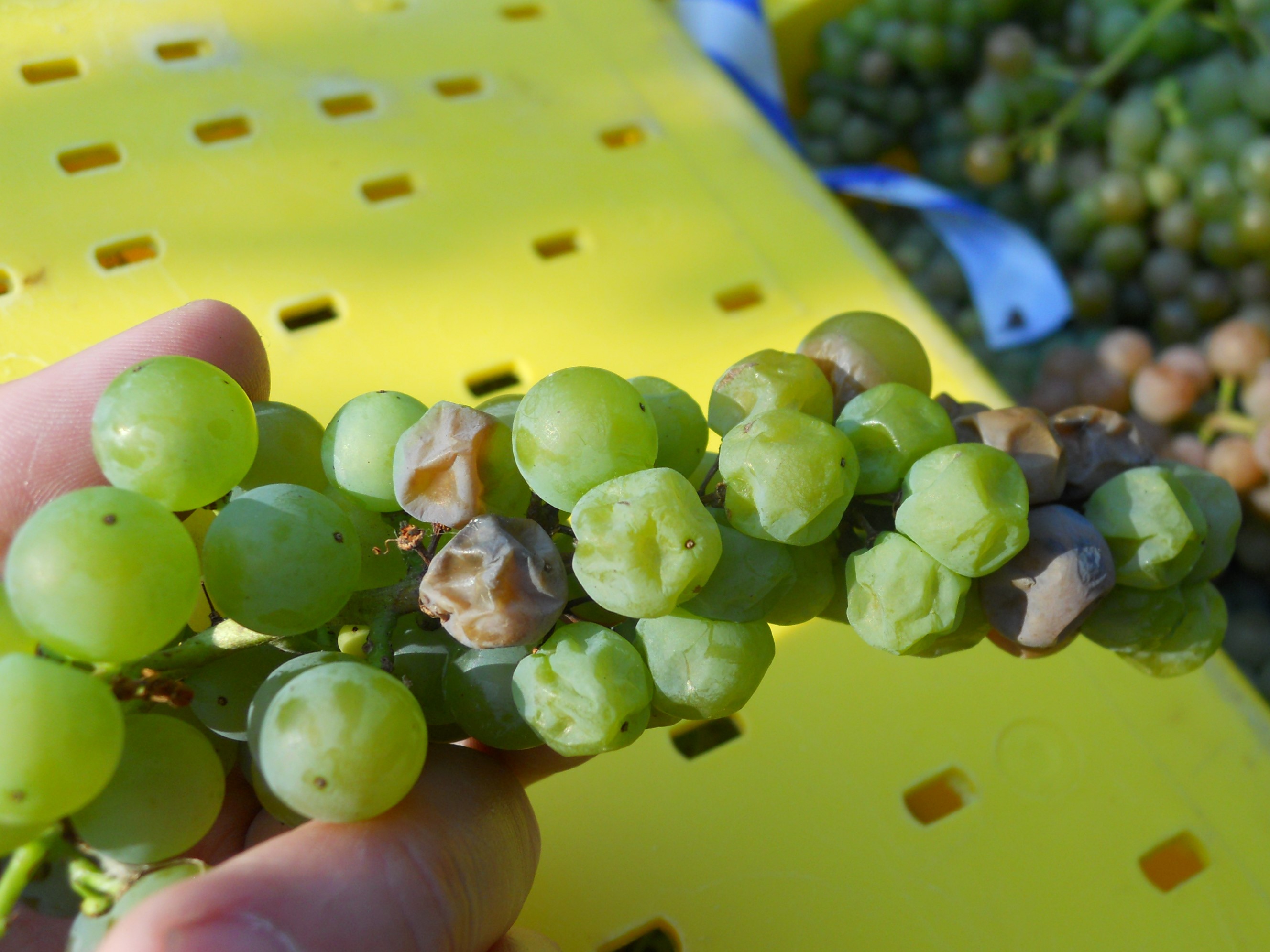Annie Klodd, Matt Clark, and John Thull
We have heard multiple reports of severe cluster necrosis, particularly on Marquette grapes in 2016 and 2017 in Minnesota, including here at the U of MN Horticultural Research Center. In some vineyards, it has caused substantial or complete crop loss.
Growers report that the clusters rapidly shrivel and die during veraison, while the plants and clusters appear healthy up until this point. It does not appear to be caused by black rot, mildew or botrytis. The rachis on the clusters desiccate first, followed by the berries.
This problem is still undiagnosed, however we recognize potential causes that are consistent with these symptoms. We are currently investigating it to determine the causes and extent, in order to develop appropriate management recommendations.
Knowing the number and geographic range of vineyards affected will help us address the issue most effectively. If you have experienced cluster necrosis in Marquette or another cultivar, we welcome you to contact us at [email protected].
Berries beginning to shrivel following desiccation of the rachis and pedicels, in cultivar 1098. Photo: John Thull.
One potential cause - Bunch Stem Necrosis
While the issue is currently undiagnosed, one potential cause could be a physiological grapevine disorder called Bunch Stem Necrosis (BSN). It is not a pathogen or pest problem, but rather a disorder within the plant that is caused by environmental factors. It has been documented in many different cultivars including but not limited to Cabernet Sauvignon, Riesling, Himrod, Marquette, and some experimental hybrids.
Symptoms of bunch stem necrosis
The symptoms of BSN can occur during bloom, or during and after veraison. During bloom, pedicels darken and die, causing the flowers to fall to the ground. At veraison, BSN first appears as small, dark lesions on the rachis and pedicels (stem sections of the cluster). As the lesions expand they desiccate the pedicels and rachis, causing the berries to shrivel and die.
Necrosis beginning to develop on cultivar 1098. The rachis and pedicels have darkened and desiccated, and the attached berries are beginning to shrivel. Photo: John Thull, University of Minnesota. Causes of Bunch Stem Necrosis There are several potential causes of BSN, and they vary between individual vineyards. There is no known pathogen or insect pest associated with BSN. Rather, it is a plant physiological disorder that appears to occur following certain environmental stresses. Below are some of the possible causes of BSN based on previous research around the world. These differed between studies, vineyards, and years: Management More research is needed to determine the best management practices for bunch stem necrosis in Minnesota. Management will likely depend on the root cause of the issue at the site. Some studies have found that applying Mg and Ca as a soil fertilizer or foliar spray may alleviate BSN symptoms.2,4 but these results were inconsistent across instances, with other studies finding no effect. In some cases, altering pruning intensity has been found to reduce BSN.3 To address the recent necrosis issue in Minnesota and develop regional management recommendations, we hope to confirm whether the issue is BSN or another problem; narrow down the causes; and evaluate the effectiveness of various management options. Sources:
